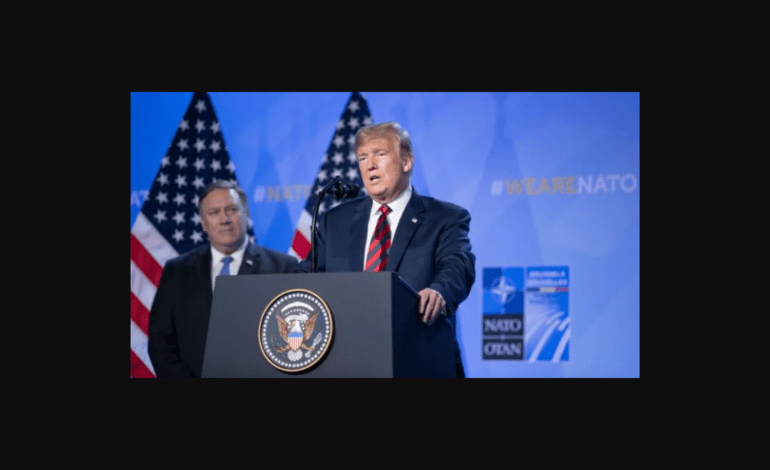
Trump heads to Asia amid 25-day U.S. government shutdown, Pentagon receives $130 million donation
The U.S. federal government shutdown entered Day 25 on Saturday with no immediate resolution in sight, as President Donald Trump departed for a six-day Asia tour that includes stops in Malaysia, Japan, and South Korea. The trip, focused on high-stakes diplomatic and trade discussions, comes as Democrats and Republicans continue to clash over funding legislation, leaving millions of federal workers without pay.
President Trump’s absence from Washington has drawn criticism from Congressional Democrats, who argue that the president should prioritize reopening the government over foreign travel. Senate Minority Leader Chuck Schumer said, “While Americans are struggling to make ends meet, federal workers are going without pay, and millions of families are bracing for soaring health care costs, the president is leaving the country. Instead of doing his job, President Trump is abandoning it.”
The shutdown, now the second longest in U.S. history, has stalled critical funding, including for military personnel. Despite this, the Pentagon received a $130 million donation from an anonymous U.S. citizen to ensure continued pay for service members. Trump confirmed that the donor requested anonymity, stating, “He doesn’t want publicity… which is unusual in politics.” Pentagon officials said the donation would be used to cover payroll under the department’s general gift acceptance authority, marking an unprecedented move to fund the military outside of Congress-approved allocations.
Trump’s Asia trip is scheduled to last six days, with a return planned for Thursday, October 30. While abroad, Trump is expected to engage in trade negotiations with China, attend the ASEAN Summit in Malaysia, and meet with leaders from Japan and South Korea. He also intends to witness the ceremonial signing of a peace deal between Cambodia and Thailand, which he helped broker.
Despite being away, Trump indicated he is willing to engage with Democratic leaders on the shutdown upon his return. “I would, I’d be willing to… All they have to do is say yes, then it’s over. And then we go into negotiations,” he said aboard Air Force One. However, with the president absent, the likelihood of a breakthrough deal before key dates—such as Oct. 31 paychecks for military and congressional staff, Nov. 1 ACA enrollment, and Nov. 4 Election Day in multiple states—remains uncertain.
The shutdown also threatens early childhood programs like Head Start, and risks disruption to federal healthcare subsidies under the Affordable Care Act if lawmakers do not reach a deal. Analysts warn that if the government remains closed past November 5, it would surpass the record set during the 2018-2019 shutdown over border wall funding, making it the longest in U.S. history.
Meanwhile, the DC-area Marine Corps Marathon proceeded as scheduled on Sunday, October 26, despite federal closures, drawing thousands of participants and highlighting the ongoing tension between public events and a paralyzed federal bureaucracy.
As the political stalemate continues, both parties face mounting pressure from constituents and federal employees. The coming days are critical, with Trump’s Asia visit, continued Democratic negotiations, and the looming ACA subsidy expiration intensifying the urgency to reopen the government.